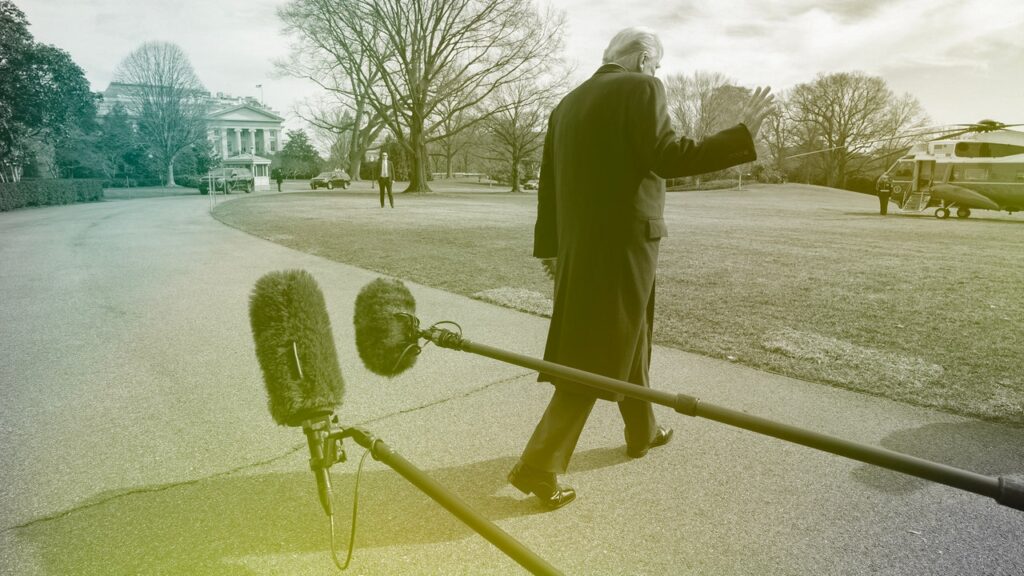On March 9, 1933, five days after the first Presidential Inauguration of Franklin D. Roosevelt, a special session of Congress, which Roosevelt had called to deal with an unprecedented economic crisis, convened on Capitol Hill. Roughly a third of Americans were jobless; hungry people were filling up soup kitchens across the country; and banks were collapsing as worried depositors rushed to withdraw their funds. On the first day that Congress met, it passed an Emergency Banking Act, which restored public trust in the banks by authorizing federal examiners to review their books and pronounce them sound, and also by paving the way for a federal guarantee on bank deposits. During the ensuing weeks, Congress established the Civilian Conservation Corps and the Federal Emergency Relief Administration to put some of the unemployed to work. In addition to this, it created the Tennessee Valley Authority to bring electrical power and jobs to one of the poorest regions of the United States. On June 16th, the ninety-ninth day of the congressional session and the hundred and fourth day of Roosevelt’s tenure, he signed into law the National Industrial Recovery Act, which guaranteed collective-bargaining rights to workers and launched a Public Works Administration to build large infrastructure projects.
The following month, in a radio address to the nation, Roosevelt referred to the “hundred days which had been devoted to the starting of the wheels of the New Deal.” From then on, Roosevelt’s “hundred days” has been viewed as a template for forceful Presidential action, and a standard by which to judge subsequent Presidents. When Donald Trump’s hundred days comes to an end, this Wednesday, he will have outmatched Roosevelt in one area: he has signed a hundred and thirty executive orders to F.D.R.’s ninety-nine. And yet Trump doesn’t have a single piece of major legislation to his name, and his economic policies, compared with Roosevelt’s, are having the opposite effect.
F.D.R.’s whirlwind of actions didn’t bring the Great Depression to an immediate end, but, in an economy that was in a state of collapse, they restored hope and confidence. Trump, by setting off a chaotic trade war that has spooked American households and businesses alike, has single-handedly stunned an economy that, when he took over, was characterized by strong growth, a healthy rate of business investment, and a soaring stock market. Last Friday, the University of Michigan’s Surveys of Consumers reported that consumer confidence has sunk to its second-lowest level ever: only the depths of the COVID-19 pandemic saw a lower reading. As the Commerce Department prepares to release its initial estimate of G.D.P. growth for the first quarter of 2025, economic forecasters are expecting an anemic rate of just 0.3 per cent, down from 2.4 per cent in the final quarter of last year, when Joe Biden was still in the White House.
Part of this weakness can be attributed to American consumers and firms rushing to buy imported goods, which aren’t factored into the G.D.P., before Trump’s tariffs go into full effect. But there are other signs of instability, too, including gyrations in the financial markets. Last week, stocks rallied after Trump said he may reduce the level of tariffs on China and backed off his threat to fire Jerome Powell, the chair of the Federal Reserve. But, since Trump took office, the Dow has dropped by about eight per cent, the bond market has experienced atypical price fluctuations, and the value of the dollar has fallen sharply—an unusual combination of market movements that some people on Wall Street have dubbed the “Sell America” trade. In a little more than three months, investors have gone from salivating over the prospects of a Trump Administration to issuing a vote of no confidence in it.
Despite all the drama, over-all consumer spending, which includes purchases of imported goods, hasn’t cratered. “We don’t see any change at this point,” Michael Miebach, the C.E.O. of Mastercard, said at a conference last week. In certain parts of the economy, though, cracks are appearing, particularly in areas where spending is discretionary. Announcing Delta Air Lines’ latest quarterly financial results, the company’s leader, Ed Bastian, said that “growth has largely stalled.” Scott Boatwright, the boss of Chipotle, said the fast-casual restaurant chain has seen “a slowdown in consumer spending,” which he attributed to people “saving money because of concerns around the economy.”
Many of these concerns revolve around Trump’s ever-shifting tariff policy. Currently, it consists of a ten-per-cent levy on goods from nearly all foreign countries, along with considerably higher “reciprocal” tariffs that have been suspended for ninety days; duties of twenty-five per cent on steel, aluminum, cars, and some car parts; tariffs at the same level on some goods imported from Canada and Mexico; and tariffs of a hundred and forty-five per cent on products from China. One way to make sense of the impact of all these figures is to gauge the extra cost that American consumers are now paying for imported goods: according to the Budget Lab at Yale, the over-all average effective tariff rate is now twenty-eight per cent, the highest it has been since 1901.
Big businesses are still trying to figure out how to navigate the higher costs of importing finished goods and components, and whether they can mitigate things by switching suppliers. Last week, Kimberly-Clark, the maker of Kleenex tissues, Huggies diapers, and Scott toilet-paper rolls, said the tariffs will add three hundred million dollars to its gross costs. Danaher, which makes medical and industrial devices, said the toll on its operations could be as much as three hundred and fifty million dollars. Small businesses, which, according to some studies, generate close to half of all economic activity in the U.S., don’t issue public reports, but countless restaurant owners, retailers, and car dealers are going through the same sorts of calculations. Meanwhile, the rest of us are starting to face higher prices for goods made abroad. Some sellers on Amazon have already raised their prices to reflect the new tariffs. So have the Chinese fast-fashion companies Shein and Temu, whose products are particularly popular with Gen Z-ers.
Practically everywhere, confusion reigns—and no wonder. “The degree of chaos and uncertainty that has been unleashed upon the U.S. economy, and the world economy, is unprecedented,” Eswar Prasad, a Cornell University economist and former senior official at the International Monetary Fund, told me. “There have been other Administrations that have come to office and had to deal with instability early on. But the fact that this Administration comes in and its own policies are what stoked instability is quite remarkable.”
Trump’s trade war now encompasses the world’s three largest economies—the United States, China, and the European Union—and dozens of other countries. Prasad spent part of last week in Washington at the annual meeting of the I.M.F. and World Bank, two multilateral pillars of the pre-Trump global economic order, where he spoke with a number of economists and officials from overseas. “To some degree, all the officials I talked to were saying the same thing: ‘We can’t believe that the U.S. has come to this pass,’ ” he told me. “And then they were all trying to figure out how to adapt to this new reality. The sense is that the world has changed fundamentally in ways that cannot be easily put back together again.”
Despite the relative calm that settled over the financial markets last week, there is still a great deal of nervousness about what lies ahead, along with widespread skepticism about the Administration. “This is the first time in my career that people have asked genuine questions about the basic competency of U.S. policymakers,” Dario Perkins, a managing director at TS Lombard, a London-based economics consultancy, said to me. “We have had policy mistakes before—the Fed not raising interest rates in time or ignoring subprime—but to many investors this has seemed like complete recklessness and complete disregard for the effect it has on the economy and financial markets.”
As part of his job, Perkins, who once worked at the British Treasury, engages with institutional investors who have long preferred to park a good deal of the money they manage in the United States. In the first weeks of Trump’s return, he recalled, some of them were willing to take seriously the idea that Trump and the White House might be engaged in 4-D chess—that there might be some hidden grand strategy behind the tariff announcements and reversals. But this attitude largely disappeared on April 2nd, Perkins noted, after Trump stood in the White House Rose Garden and held up a big board showing the so-called reciprocal tariffs that he was imposing on more than a hundred countries, including poverty-stricken nations such as Lesotho, in Africa, and an uninhabited pair of islands near Antarctica. “It wasn’t just the numbers in the table,” Perkins said, recalling the event. “It was the basic lack of understanding of international trade that underpinned it. And it was the whole image. You’ve got him holding up the table like some sort of game-show host. That was the moment—the realization.”
Since then, the news out of the White House has hardly been reassuring. According to the Wall Street Journal, Scott Bessent, the Treasury Secretary, and Howard Lutnick, the Commerce Secretary, were only able to persuade Trump to suspend the reciprocal tariffs by cornering him when Peter Navarro, Trump’s hawkish trade counsellor, was in a different meeting. It seems like Bessent and Lutnick had to stage another intervention to persuade the President that firing Powell would backfire. All things considered, the economic policymaking of Trump’s team looks less like rational deliberation and more like firefighting while knowing that the fire chief is the primary arsonist.
From a strictly financial perspective, perhaps the most surprising and disturbing development has been the behavior of the bond market and the dollar. Normally, when there is some sort of economic crisis and the stock market slumps, investors buy U.S. Treasury bonds, which have long been regarded as safe bets in times of trouble. To buy Treasuries, overseas investors need dollars, which drives up the value of U.S. currency. But, in the period before Trump suspended his reciprocal tariffs, and again before he backpedalled on his attacks on Powell, stocks, bonds, and the currency fell in unison—a phenomenon more commonly associated with developing countries experiencing capital flight.
The bond market is complex, and some financial commentators have attributed the recent volatility to homegrown problems, including oversupply because of the ongoing need to issue large quantities of new bonds to finance the budget deficit. But there may be other factors in play, too, including a worldwide decline in confidence in the United States and its government. “The principle that, whenever there is trouble, people run back to the dollar and U.S. Treasuries—that was a presupposition in the markets,” Prasad said. “But now it has become clear that the elements of the institutional framework that underpinned this trust—the rule of law, the independence of the central bank, the checks and balances—each of these is being shredded by Trump. That has caused the entire world to reassess its view about the safety of U.S. Treasuries.”
For a country with more than thirty trillion dollars in outstanding government debt, about eight trillion of which is owned by foreigners, the spectre of a weakened Treasury bond market is alarming. A lasting shift away from American financial assets would force the U.S. government to offer higher yields on its debt, increasing its interest payments, which already exceed the Pentagon budget. In a more extreme scenario, falling demand for Treasuries could be associated with a big slide in the value of the dollar and the threat of a major financial crisis. This was roughly what happened in Britain in 2022 when the new government of Liz Truss announced a mini-budget that financial markets, and the Bank of England, regarded as grossly irresponsible. A few weeks later, Truss was gone.
The United States is a much bigger, stronger country than Britain, and Trump is in a more secure position than Truss was. Regardless of how recklessly he behaves, there are no obvious, reliable alternatives to U.S. Treasuries and the dollar. “Some institutional investors are putting money in gold, bitcoin, and other currencies,” Prasad noted. “Some central banks are doing the same. But can you really take a couple of hundred billion dollars and put it in other pots? There really isn’t much of a place for it to go. So, is all this going to produce a fundamental shift away from the dollar? It is premature to make a strong case for that.”
Perkins agreed with this analysis. He also said a better analogy than the Truss implosion is Britain’s decision, in 2016, to leave the European Union. “I’m not sure that what the Trump Administration is doing will cause a big recession or a big financial crisis—in the same way that Brexit didn’t,” he said. “But over time you just see the things they are doing damaging the economy.” Citing studies of populist governments in Turkey, Hungary, and other places, he went on, “That’s the way with populism. It typically ends up in this slow-burn destruction, and then it feeds on itself. They make the underlying problem worse, which leads to more populism. They undermine institutions. Eventually, it becomes all about the self-survival of the populist regime rather than the economy.” Is that the fate awaiting us here in the United States? We’ve got another three and a half years to find out. That may be the most alarming thing of all. ♦
Premium IPTV Experience with line4k
Experience the ultimate entertainment with our premium IPTV service. Watch your favorite channels, movies, and sports events in stunning 4K quality. Enjoy seamless streaming with zero buffering and access to over 10,000+ channels worldwide.

















